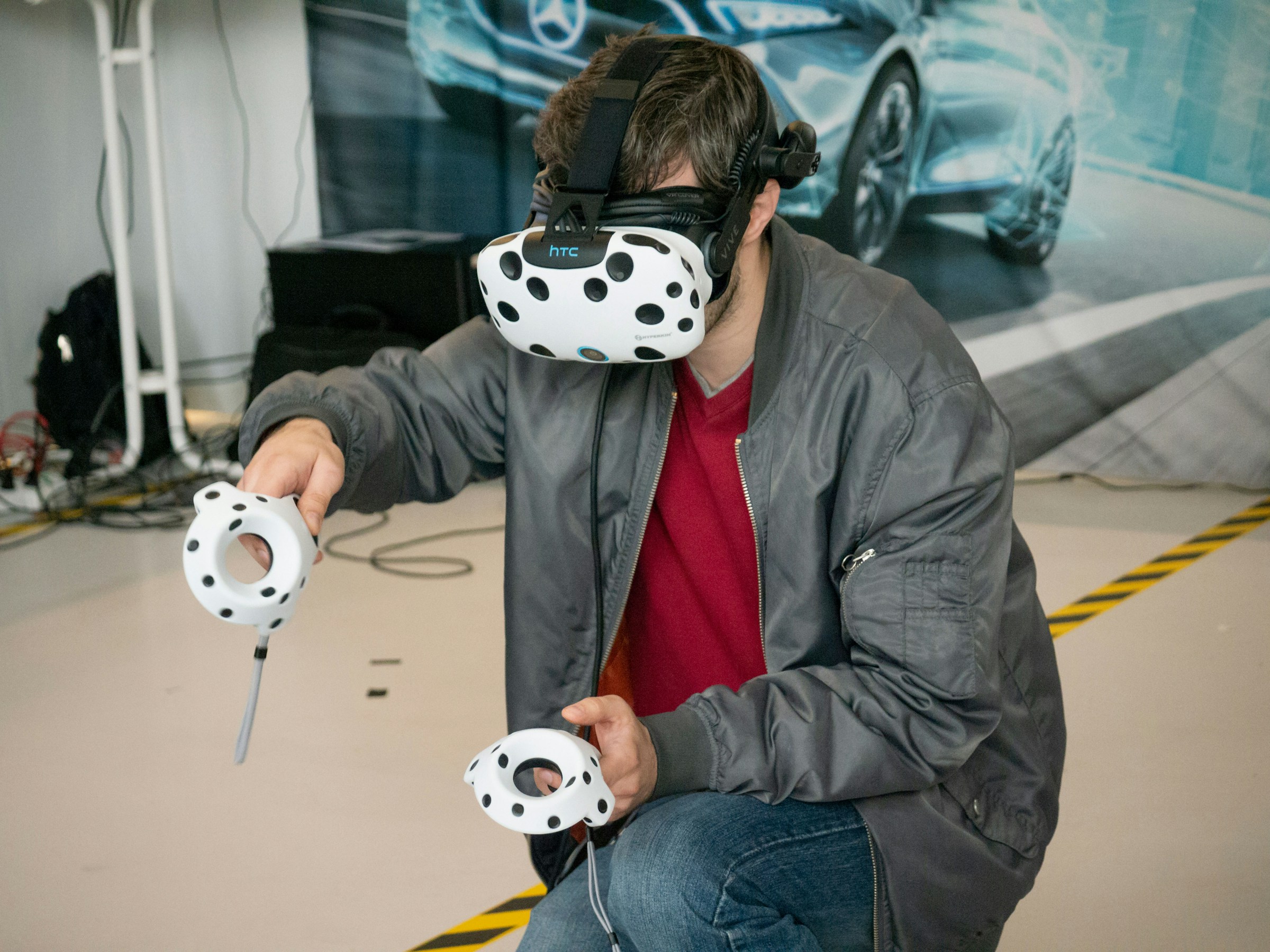What are the best practices for designing user-friendly interfaces in VR simulation games?

Virtual reality (VR) simulation games have revolutionized the gaming industry, offering players an immersive experience that blurs the line between the virtual and the real world. However, the success of these games hinges significantly on the user interface (UI) design. A user-friendly interface not only amplifies the user experience but also ensures that players can interact seamlessly with the virtual environment. In this article, we will delve into the best practices for designing user-friendly interfaces in VR simulation games, addressing the crucial aspects that designers need to consider for an optimal user experience.
Understanding the Unique Challenges of VR Interface Design
Designing for VR comes with its own set of challenges, which are vastly different from traditional game design. The user experience in VR is highly dependent on the interface's ability to provide intuitive controls and minimize physical discomfort.
En parallèle : How can real-time ray tracing be used to enhance the visual fidelity of video games?
Field of View and Spatial Awareness
One of the primary considerations in VR interface design is the field of view. Unlike traditional 2D screens, where the entire interface is visible at once, VR interfaces need to take into account the player's spatial awareness. Players may need to look around in the virtual environment to interact with different elements, making it crucial for designers to position important information within the player's natural range of motion.
Motion Sickness and Comfort
Motion sickness is a common issue in VR, often resulting from discrepancies between the player's physical movements and the virtual environment. To mitigate this, designers should strive to maintain a steady frame rate and avoid abrupt movements in the interface. Additionally, providing options for seated play and adjusting the field of view can help reduce discomfort.
A découvrir également : How can developers create more interactive and engaging in-game tutorials?
Intuitive Controls and Feedback
In VR, the physical act of interacting with the interface should feel natural. Designers must ensure that controls are intuitive and provide immediate feedback. For example, hand gestures should be mapped to corresponding actions in the game, and tactile feedback, such as vibrations, can enhance the sense of interaction.
Utilizing Design Principles for Effective VR Interfaces
Applying established design principles can greatly enhance the usability of VR interfaces. These principles guide designers in creating interfaces that are both functional and engaging.
Consistency and Familiarity
Consistency is key in any interface design, and it holds even more significance in VR. Players should be able to predict the behavior of interface elements based on their past experiences. Using familiar symbols and layouts can reduce the learning curve and make the interface more user-friendly.
Minimalism and Clarity
Given the immersive nature of VR, cluttered interfaces can overwhelm players. Emphasizing minimalism and clarity ensures that players can easily find and interact with the necessary elements. Designers should prioritize essential information and use clean, simple graphics to maintain a streamlined interface.
Accessibility and Inclusivity
Accessibility is a critical aspect of interface design. VR interfaces should cater to a diverse range of players, including those with disabilities. Implementing options such as adjustable text size, voice commands, and colorblind modes can make the game more inclusive and enhance the user experience for everyone.
Leveraging Technology and Tools in VR Design
Advancements in technology and design tools have opened new avenues for creating high-quality VR interfaces. Leveraging these tools can streamline the game development process and lead to more polished end products.
Unreal Engine and Design Prototyping
Unreal Engine is a powerful tool that many game designers use to create intricate VR environments. Its robust features allow for real-time rendering and prototyping, enabling designers to test and refine their interfaces quickly. Utilizing such tools can help identify potential issues early in the development process and ensure a smoother user experience.
Augmented Reality (AR) and Blended Experiences
Blending augmented reality (AR) with VR can create unique and engaging experiences for players. AR can overlay virtual elements onto the real world, providing additional context and enhancing immersion. For example, a VR simulation game could use AR to display real-time stats or objectives without disrupting the gameplay flow.
High-Quality Asset Creation
High-quality assets are crucial for maintaining immersion in VR. Detailed textures, realistic lighting, and lifelike animations contribute to a more believable virtual environment. Investing in high-quality asset creation can significantly elevate the overall user experience and make the game more compelling.
Engaging with the Target Audience for Valuable Feedback
User feedback is invaluable in the game development process, particularly for VR games. Engaging with the target audience can provide insights into their preferences and pain points, guiding designers in creating more user-friendly interfaces.
Beta Testing and Iterative Development
Conducting beta tests with a diverse group of players can reveal how well the interface performs in real-life scenarios. These tests allow designers to gather feedback and identify any issues that may not be apparent during internal testing. Iterative development, where the interface is continuously refined based on user feedback, can lead to a more polished and user-friendly product.
Community Involvement and Collaboration
Building a community around the game can foster a sense of ownership among players. Active involvement in forums, social media, and other platforms allows designers to stay connected with their users and understand their needs better. Collaborative efforts, such as involving players in the design process or hosting design contests, can also yield innovative ideas and solutions.
Long-Term Support and Updates
The user experience does not end at the game's launch. Providing long-term support and updates ensures that the interface remains relevant and user-friendly over time. Regular updates can address any emerging issues, incorporate new features based on user feedback, and keep players engaged.
Real-Life Examples and Case Studies
Examining real-life examples and case studies can provide practical insights into best practices for VR interface design. Successful VR games often share common design elements that contribute to their success.
Beat Saber: Intuitive Controls and Feedback
Beat Saber is a popular VR game known for its intuitive controls and immediate feedback. Players use controllers to slash through blocks in sync with music, with haptic feedback enhancing the sense of interaction. The game's interface is minimalistic, with clear visual cues guiding the player's actions.
Job Simulator: Consistent and Accessible Design
Job Simulator offers a humorous take on various job roles, with an interface that emphasizes consistency and accessibility. The game uses familiar objects and interactions, making it easy for players to understand and navigate the virtual environment. Options for seated play and adjustable settings cater to a wide range of users, enhancing the overall user experience.
Half-Life: Alyx: High-Quality Assets and Immersion
Half-Life: Alyx is acclaimed for its high-quality assets and immersive environment. The game's realistic textures, detailed animations, and dynamic lighting create a believable virtual world. The interface seamlessly integrates with the gameplay, providing essential information without breaking immersion.
Designing user-friendly interfaces for VR simulation games requires a thoughtful approach that considers the unique challenges and opportunities of VR. By focusing on design principles such as consistency, minimalism, and accessibility, leveraging advanced tools and technology, and engaging with the target audience for feedback, designers can create interfaces that enhance the user experience and ensure long-term success.
Ultimately, the best practices for designing user-friendly interfaces in VR simulation games revolve around understanding the player's needs and preferences. By prioritizing intuitive controls, minimizing motion sickness, and creating high-quality immersive experiences, designers can craft interfaces that not only meet but exceed player expectations. The evolving landscape of VR technology and the collaborative nature of the gaming community will continue to drive innovation and elevate the standard of VR game interfaces.
